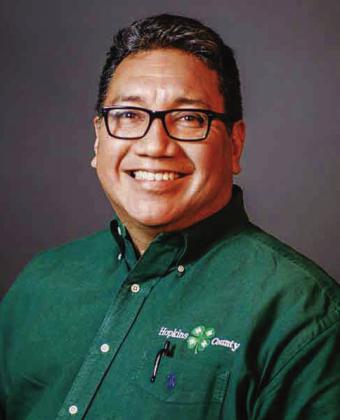Bahiagrass (Paspalum notatum), also known as highwaygrass, is an aggressive, warm-season perennial grass. B ahiagrass has a mat-forming habit with a light green color, coarse texture, and open canopy. It is native to South America and was introduced into the U.S. in Florida as a forage grass around 1913. Bahiagrass is e asily identified by its distinctive “Y-shaped” seed head. It tolerates a wide range of soil conditions and spreads by seeds and rhizomes (a horizontal, modified stem found at or just below ground level). B ahiagrass growth is favored by drought, so it is an indicator plant for droughty soil conditions. The aggressive nature and drought tolerance of bahiagrass make it ideal for erosion control along roadsides and highway rights of way. However, its aggressive nature also makes it difficult to control as a weed in the landscape. Before starting a weed control program, homeowners should realize that the complete eradication of bahiagrass (or any weed) from the landscape is not practical. A more practical approach is to control (not eradicate) the weed by limiting the infestation to a tolerable level.
Maintaining the health and density of your lawn is the best method for preventing a weed problem. Proper mowing height, irrigation, and fertilization of turfgrass will be the best defense against weeds. If bahiagrass becomes a problem in a turf area, it can be dug up, or an herbicide may be used. If an herbicide treatment is chosen, treatments should be timed appropriately for optimum effectiveness. Since bahiagrass is a p erennial weed that also reproduces by rhizomes, post-emergent herbicides will also be necessary for improved control.
Post-emergent herbicide application should start in May when bahiagrass is small and starting to actively grow. A piece of advice: Once bahiagrass weeds have been eliminated in areas of the turf, bare spots will be left behind. To prevent the invasion of new weeds in these bare spots, it is best to fill them with plugs or sprigs of the desired turfgrass.
Glyphosate — Non-selective herbicides, such as glyphosate, can be used for spot treatments; however, desirable grasses can be severely injured or killed with contact. Multiple applications of glyphosate will b e required to control bahiagrass. If it is not practical to prevent glyphosate from getting on desired grasses, then a selective herbicide should be used.
The following information is a guideline for choosing a selective herbicide according to turfgrass type.
Atrazine — Atrazine is a post-emergence herbicide for bahiagrass control that also has pre-emergence activity to give fair control of bahiagrass seed. It will also give post-emergence control of many broadleaf weeds. However, it is only safe to use on centipedegrass and St. Augustinegrass lawns. For maximum effectiveness, apply atrazine when air temperatures reach 65-70 °F for four conse cutive days.
Sethoxydim: For centipedegrass lawns, the use of sethoxydim (BASF Segment II Herbicide) will suppress bahiagrass. S ethoxydim should be applied no sooner than 3 weeks after centipedegrass spring green-up. Wait until lawns are fully greened. For a more effective bahiagrass treatment, do not mow 7 days before or after treating with sethoxydim. Reapply sethoxydim 3 weeks after initial application to suppress bahiagrass growth and seed head de velopment. Do not make more than two applications per growing season.
Imazaquin: Image Kills Nutsedge is a homeowner- packaged, post-emergence herbicide product that will aid in the control of and reduce competition from b ahiagrass. It may be applied to established bermudagrass, Zoysiagrass, centipedegrass, and St. Augustinegrass but do not apply to tall fescue. Do not apply imazaquin to St. Augustinegrass for other weed control during the winter. Do not apply imazaquin just prior to or during spring transition (green-up of the lawn). Do not use imazaquin in vegetable gardens, and do not use the grass clippings from treated lawns as mulch in landscape beds or around vegetables, fruit trees, or small fruit plants. A repeat application may be made for difficult to control weeds after 6 weeks.
Metsulfuron can be used on bermudagrass, St. Augustinegrass, centipedegrass, and zoysiagrass. The Quali-Pro Fahrenheit also contains dicamba for broadleaf weed control. Blindside Herbicide also contains sulfentrazone for nutsedge control.
A non-ionic surfactant (such as Southern Ag Surfactant for Herbicides, Hi-Yield Spreader Sticker, or Bonide Turbo Spreader Sticker) is required at 2 teaspoons per gallon of spray mix for best control with the metsulfuron products above. Read the metsulfuron product label for more information. Some discoloration of turfgrass may occur after the application of metsulfuron, and increased yellowing and stunting of turfgrass may occur with the addition of the surfactant. A repeat application may be required in 4 to 6 weeks for best control of bahiagrass. Follow label directions for a reduced rate on centipedegrass.
Do not over-seed or resod for 8 weeks, or plant woody ornamentals in treated areas for one year after applying metsulfuron. Do not apply metsulfuron herbicides within two times the width of the drip line of desirable hardwood trees. Do not allow spray drift to contact desirable shrubs, and high temperatures at application may increase herbicide drift. Make metsulfuron applications when temperatures are below 85 °F. Allow one week between application of metsulfuron and other lawn pesticide products. Read the product label for other precautions for each turfgrass species.
For more information on this or any other agricultural topic please contact the Hopkins County Extension Office at 903885-3443 or emall me at m-villarino@tamu.edu.


